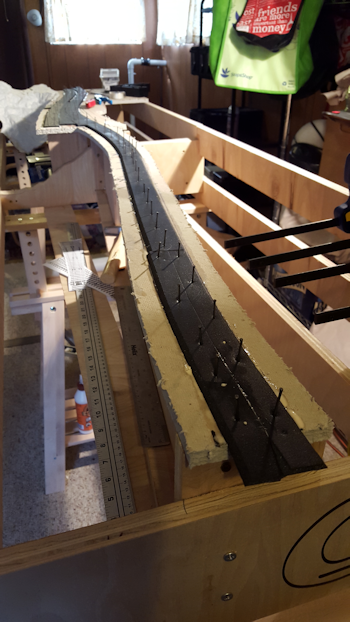
The Eagle – It’s that fiendish Mekon, Digby!
I think every kid, well boy at least, who grew up in the UK in the 1950s read The Eagle and had a Triang Princess Elizabeth train set. In the 60s I trainspotted on the windy platforms of Plymouth North Road station, annotating my shed books and cabbing in those days before Health & Safety and security issues meant those days were never going to happen again.
Since then life went the way life generally goes. I amassed a huge collection of model railway magazines and visited any number of preserved railways and museums but never got around to actually building a model railway.
But I’ve had plenty of time to think about it.
Other than in the little wood and plastic world I’m now building in my basement Boltorr Road exists solely in my imagination, or possibly on some other world in some other quantum universe. So no one is going to tell me what is right or wrong on my own little railway. Rivet counters and other miserablists just say nothing, okay?

The track bed now laid and stuck down looking north
It will be the geography, the industry and other economic factors will determine the traffic on the line; the engines, the coaching stock, the nature of the goods trains, and just the actual look of it.
Boltorr Road Halt is situated on a hypothetical branch line running north out of Plymouth towards north Cornwall, between the Tamar and Dartmoor. Originally built by the South Devon and North Cornwall Railway before being run as a joint railway between the Great Western Railway and the London & South Western Railway, then the GWR and Southern Railway, and eventually British Railways Western and Southern Regions.
So while it might be possible to see a Bulleid “Westcountry” in charge of a London bound boat train diverted around Dawlish and Okehampton, you’re not going to see a Deltic drawing a train of iron ore wagons even though the track was built for heavy freight.
Did I mention that? Oh yes. There’s plenty of china clay and quarrying going on along the old SD&NC, as well as fish, fruit, vegetables, milk and all the other stuff which comes from Devon and Cornwall.
The layout will be able to represent any time from the early fifties to the mid-eighties. Plenty of branch lines were still using Victorian signalling and infrastructure even then. Just the nature of the train passing through will suggest what era the line is in at that moment.
Well. That’s the theory. Let’s see what happens.

